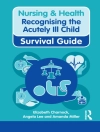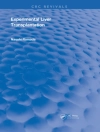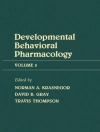This book analyses the basic rationale of noninvasive respiratory management in upper airways medical and perioperative disorders and key interactions and clinical implications. It offers key diagnostic tools to detect early and late failure of upper airway disorders whit a noninvasive approach. Furthermore, all medical and post-operative clinical indications of acute and chronic diseases in upper airway respiratory disorders and outcomes are summarized.
The book can be considered unique from various perspectives: from the physiological and practical point of view as well as from the side of the therapeutic approach. As a matter of fact, from the physiological perspective, noninvasive mechanical ventilation has been shown to have several beneficial effects on the elasticity, musculature, and resistance of the upper and lower airways. Then, in the book the relationships between noninvasive respiratory management options and upper airway disorders in medical and postoperative conditions are also considered. Finally, the book provides information and analysis of the interaction of upper airways in the interaction of noninvasive mechanical ventilation management, which are the determining factors in the response in various clinical settings.
Considering the growing evidence of the role of upper airways disorders in influencing the outcomes of noninvasive mechanical ventilation, in this book is presented a unique multidisciplinary approach to better understand the role of upper airways in noninvasive mechanical ventilation.
The volume – richly illustrated – offers an exhaustive analysis of the role of the upper airways in patients who require treatment with noninvasive mechanical ventilation and can be considered a scientific reference for several specialists such as intensivists and anesthesiologists, pneumologists-sleep medicine professionals as well as otorhinolaryngologists.Spis treści
Foreword. Preface. Part I. Upper Airways Anatomy and Applied Physiology.- Upper airway structure.- Upper airways the maxilar-Jaw effect.- Upper airways ethnic variations.- Nasal upper airway flow and resistance.- Upper airway humidification. Physiology and clinical implications.- Upper airway -thermoregulation and Airway resistance.- Work of breathing in Upper Airway Respiratory Failure.- Noninvasive positive and negative pressure effects in upper airway respiratory failure.- Part II. Upper Airways Noninvasive Ventilator Management.- Nasal high flow- Rationale and indications.- Noninvasive ventilation. Rationale and indications.- The mask Interface designs.- Relationships mask interface and upper airway anatomy- physiology.- Noninvasive ventilation in Upper airways: pressure, airflow, and volume waveforms monitoring.- Success and failure Risk factors of response. Noninvasive ventilator support options.- Humidification in Noninvasive and high flow oxygen Humidification.- Part III. Clinical indications in upper airways disorders.- Noninvasive approaches in Supraglottic and vocal cord dysfunction.- Noninvasive approaches in Dynamic airway collapse.- Noninvasive approaches in tracheobronchomalacia.- Upper airways noninvasive ventilation in acute hypoxemic respiratory failure.- Noninvasive approaches in Difficult endotracheal intubation.- Noninvasive approaches after extubation. Respiratory failure. Ventilatory options.- Noninvasive approaches in do not intubation and palliative indications.- Upper airway respiratory failure in Anesthesiology.- Pharmacology in upper airway physiology.- Upper airway disorders and postoperative respiratory failure.- Tracheostomy in upper airway disorders.- Decannulation process in upper airway disorders. Noninvasive approaches.- Hypercapnic Chronic obstructive pulmonary disorders.- Neuromuscular respiratory disorders.- Sleep Obstructive Apnea Syndrome.- Sleep Breathing in Heart failure.- Obesity hypoventilation syndrome.- Noninvasive ventilatory approaches in Neonatology.- Upper airway disorders in Pediatrics. Noninvasive ventilatory approaches.- Bronchoscopy procedure and non-invasive approach.- Transesophageal echocardiography and non-invasive approach.- Part IV. Diagnosis and Monitoring.- Diagnostics procedures: Laryngoscopy and fibro bronchoscopy.- Functional procedures in Upper Airways disorders.- Sleep Breathing disorders.- Swallowing disorders and upper airways relationships during noninvasive ventilation.- Monitoring upper airway disorders and noninvasive ventilation approach. Pulse oximetry and capnography.- Clinical cases: Endoscopy evaluation.- Clinical cases: noninvasive ventilation.- Part V. Outcome in Upper Airway Disorders and Noninvasive Ventilatory Options.- Key Summary in treatment and prevention.- Long term outcome and home noninvasive mechanical ventilation.
O autorze
Antonio M. Esquinas is critical care specialist and staff physician in the Intensive Care Unit at the Hospital Morales Meseguer, Murcia. Spain. He is an International fellow of the American Association Respiratory Care (AARC), fellow of the American College Chest Physicians. (ACCP) European Respiratory Society, and Director of the International School of Non Invasive Ventilation, International noninvasive ventilation Fellowship program, president of the International Association of Non Invasive Ventilation and International College of Expert of noninvasive ventilation. His main educational and research activities are related to noninvasive mechanical ventilation in pulmonary, critical care and sleep medicine. Currently, he is very keen in difficult weaning, postextubation, respiratory, humidification and airway clearance techniques in mechanically ventilated patients. He is author of more than 60 books and 560 indexed papers in noninvasive ventilation approaches.
Andrea De Vito MD, Ph D works at Ravenna Hospital, Health Romagna Service, Italy. He is the ENT Unit Director and his specific ENT fields of interests are noninvasive ventilation; sleep-disordered breathing; head and neck oncology and ear surgery.
Prof. De Vito is author of several papers published on international scientific journals, reviewers for “The Laryngoscope” and member of the most important scientific Societies.
Nikolaos Barbetakis is Consultant Thoracic Surgeon, Head of Thoracic Surgery Department at the Theagenio Cancer Hospital of Thessaloniki, Greece. After the degree he specialized in Greece and USA. Dr. Barbetakis is fellow of The European Board of Thoracic Surgery (FEBTS) and author of several articles on international scientific journals.












